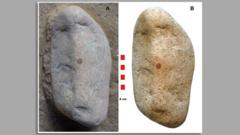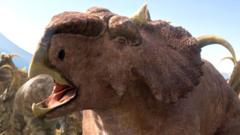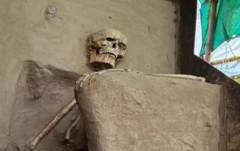A recent analysis of skeletal remains at the Charterhouse Warren site has revealed dark insights into the Bronze Age, suggesting that the bones of at least 37 individuals reflect a horrific tale of not only violence but also cannibalism, stirring academic curiosity and concern.
Grim Findings at Bronze Age Site: Evidence of Cannibalism Uncovered

Grim Findings at Bronze Age Site: Evidence of Cannibalism Uncovered
Recent archaeological research reveals that 37 prehistoric individuals in England were likely victims of murder and cannibalism, shocking the scientific community.
The skeletal remains, sprawled across a nearly 50-foot ditch in Charterhouse Warren, southwest England, tell a shocking narrative marked by violence and potential ritualistic cannibalism. This assemblage of bones, long neglected since their accidental discovery by cave explorers in 1970, has been re-examined under new light due to a groundbreaking study published in the journal Antiquity by Professor Rick Schulting and his archaeology team from Oxford University.
Initial findings indicated that the remains, estimated to date back to between 2210 and 2010 B.C., comprised a mix of human and animal bones. However, detailed analysis has recently uncovered evidence that 37 individuals—men, women, and children—were murdered and possibly consumed in a feast following their death. This revelation contradicts prior interpretations of the site and raises profound questions about the cultural practices of Bronze Age societies in Britain.
Professor Schulting remarked, "This situation is indeed startling. Such evidence is entirely unexpected and not characteristic of what we know about British prehistory." The lack of formal documentation related to the original discovery meant that crucial details were overlooked for decades until recent meticulous forensic analysis.
The study's findings challenge prevailing narratives about the social and ritualistic dynamics within these ancient communities. While evidence of intergroup violence and cannibalism has surfaced in other historical contexts, its presence at Charterhouse Warren presents a unique case, amplifying interest in Bronze Age sociocultural phenomena and the lengths to which human societies have gone in moments of conflict.
As researchers continue to explore the implications of these findings, they underscore the necessity of revisiting archaeological histories with contemporary techniques to uncover deeper understanding of our ancestors. The Charterhouse Warren site, once dismissed, now stands as a testament to the complex and often grim realities of ancient life.
Initial findings indicated that the remains, estimated to date back to between 2210 and 2010 B.C., comprised a mix of human and animal bones. However, detailed analysis has recently uncovered evidence that 37 individuals—men, women, and children—were murdered and possibly consumed in a feast following their death. This revelation contradicts prior interpretations of the site and raises profound questions about the cultural practices of Bronze Age societies in Britain.
Professor Schulting remarked, "This situation is indeed startling. Such evidence is entirely unexpected and not characteristic of what we know about British prehistory." The lack of formal documentation related to the original discovery meant that crucial details were overlooked for decades until recent meticulous forensic analysis.
The study's findings challenge prevailing narratives about the social and ritualistic dynamics within these ancient communities. While evidence of intergroup violence and cannibalism has surfaced in other historical contexts, its presence at Charterhouse Warren presents a unique case, amplifying interest in Bronze Age sociocultural phenomena and the lengths to which human societies have gone in moments of conflict.
As researchers continue to explore the implications of these findings, they underscore the necessity of revisiting archaeological histories with contemporary techniques to uncover deeper understanding of our ancestors. The Charterhouse Warren site, once dismissed, now stands as a testament to the complex and often grim realities of ancient life.




















